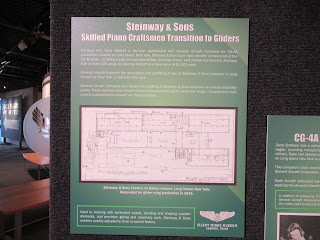The Liberty Gazette
December 12, 2023
Ely Air Lines
By Mike Ely and Linda Street-Ely
Not long after Nazi Germany executed 50 prisoners who had escaped from Stalag Luft III, which had caused the Allied High Command to discourage such attempts, a captured British Lieutenant had a brilliant idea.
Lt. Tony Rolt, one of several prisoners being held in the old castle at Colditz, Germany, not far from Leipzig, noticed when he went into the castle’s chapel that the guards couldn’t see the roofline from their look-out. The Germans were watching for signs of digging, but they were apparently oblivious to the opportunities for escape from on high. The chapel roof seemed a right good spot to launch a glider if his fellow prisoners could build one that would make it across the River Mulde about 200 feet below. Lt. Rolt wasn’t an airman, but there were plenty of them at Colditz. Fortunately, the castle’s library was maintained, and in it was a two-volume set of books called Aircraft Design, by fellow Brit and aviation inventor, Cecil Hugh Latimer-Needham.
Bill Goldfinch and Jack Best studied the physics and engineering explained in the books. There was even a detailed diagram of the wing section, which was a huge help to their lofty plans.
Goldfinch and Best selected 12 men to assist in building the glider. They called them their 12 apostles, and they worked in secret in the attic above the chapel. Bed slats became ribs, floor boards became wing spars; old electrical wire found in unused places of the castle served as control wires. The prisoners gave up their cotton sleeping bags to make the aircraft’s skin, and set aside some of their rationed millet, which, after boiling, would seal the pores in the fabric.
In addition to building the glider, they needed some kind of surface from which to launch it. Using tables carefully collected from around the castle, the men constructed a 60’ long runway. Since they didn’t have access to a tow plane (not to mention that would be a dead give-away of their escape), they’d have to catapult the engineless aircraft. For this, they filled a metal bathtub with concrete, linked it to a pulley system, and when the tub was dropped, the glider would bolt out.
The finished vehicle would weigh just 240 lbs., and only two men would be picked to fly out in it. They were planning to make their escape in the Spring of 1945 when they heard Allied guns. They knew the war would soon be over, and the Nazis would be defeated. While they waited, they agreed to keep the glider available for use in case the Nazis ordered a massacre. It was nearly completed when the American Army liberated the prisoners on 16 April 1945.
The Soviets got a hold of the glider, so there’s no telling where it ended up. But Goldfinch kept his drawings, and one single photo was discovered, so a few replicas have been built, some even tested – and they launched successfully in the field across the river, all according to plan.
ElyAirLines.blogspot.com


























